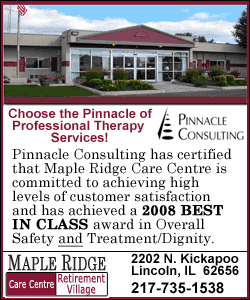|
 The National Institutes of Health is seeking those patients
-- and ones who qualify could get some free care at the government's top research hospital as scientists study why they're sick. The National Institutes of Health is seeking those patients
-- and ones who qualify could get some free care at the government's top research hospital as scientists study why they're sick.
"These patients are to a certain extent abandoned by the medical profession because a brick wall has been hit," said Dr. William Gahl, who helped develop the NIH's new Undiagnosed Diseases Program. "We're trying to remove some of that."
The pilot program, announced Monday, can only recruit about 100 patients a year. But federal health officials hope that unraveling some of these super-rare diseases in turn will provide clues to more common illnesses.
"We believe this is not only a service to be rendered, but also knowledge to be gained," said NIH Director Dr. Elias Zerhouni.

About 10,000 new patients a year sign up for roughly 1,500 different research studies, many of them for rare diseases, at the NIH's Bethesda, Md., hospital, the innocuously named Clinical Center.
The new mystery-disease program is aimed at people with the rarest of the rare diseases
-- even those with truly brand-new ailments -- who otherwise would be turned away because there are no studies, yet, for their conditions or a researcher specifically tracking their symptoms. It doesn't promise a diagnosis, but the chance to be reevaluated by a team of renowned specialists.
Amanda Young of Conyers, Ga., illustrates patient frustration. By age 3 1/2, she had suffered repeated life-threatening infections that left doctor after doctor baffled. At 8, a scratch turned gangrenous, requiring her leg to be amputated. Yet under the microscope, her immune system seemed normal except for an unexplained low white blood cell count.
[to top of second column]
 |

In 1990, not long after that amputation, her desperate parents brought her to NIH, where the hospital director "made us a promise," Young recalled. "He told us he would never give up on me."
It took until 2003, but Young got a phone call: "My disease finally had a name."
Gene research had uncovered a previously unknown immune-system pathway -- showing NIH's Dr. John Gallin that Young harbors an extremely rare mutation, named IRAK4 deficiency, that means she lacks a protein key for that pathway to work.
There's no treatment yet. But Young, now 26, continues to volunteer for research in hopes of one.
To be considered for the new program, a doctor must refer a mystery patient to the NIH and send all medical files for evaluation. Accepted patients will undergo up to a week's additional testing at the Clinical Center, for free.
For more information, see
http://rarediseases.info.nih.gov/undiagnosed/ or call 1-866-444-8806.
[Associated
Press; By LAURAN NEERGAARD]
Copyright 2008 The Associated
Press. All rights reserved. This material may not be published,
broadcast, rewritten or redistributed.

 |